Dyclonine hydrochloride
Synonym(s):1-(4-Butoxyphenyl)-3-(1-piperidinyl)-1-propanone;Dyclonine hydrochloride
- CAS NO.:536-43-6
- Empirical Formula: C18H28ClNO2
- Molecular Weight: 325.87
- MDL number: MFCD00035386
- EINECS: 208-633-6
- SAFETY DATA SHEET (SDS)
- Update Date: 2025-12-11 08:41:34

What is Dyclonine hydrochloride?
Description
Dyclonine (536-43-6) is a? topical anesthetic which has been used for oral and throat analgesia.1 Enhances neuronal mitochondrial function, potentiating respiration and providing protection against insults associated with neurodegenerative disorders.2 Inhibits aldehyde dehydrogenase ALDH3A1 resulting in accumulation of 4-hydroxynonenal, which renders head and neck squamous cell carcinoma cells sensitive to the cystine-glutamate antiporter inhibitor, sulfasalazine.3 Rescues frataxin deficiency in animal models as well as in buccal cells of patients with Friedreich’s Ataxia.4 Enhances the cytotoxic effect of proteasome inhibitors MG-1325 and bortezomib6 in cancer cells.
Chemical properties
White Crystalline Solid
Originator
Dyclone,Dow,US,1956
The Uses of Dyclonine hydrochloride
Dyclonine hydrochloride is used for the temporary relief of the following occasional mouth and throat symptoms: pain, minor irritation, sore mouth and sore throat. It is a sodium channel blocker and a HSP90 chaperone protein inhibitor. It shows local anesthetic effects in vivo and is orally active.
The Uses of Dyclonine hydrochloride
Used as a local anesthetic
The Uses of Dyclonine hydrochloride
anesthetic (topical)
The Uses of Dyclonine hydrochloride
Provides anesthesia of mucous membranes. Apply 5 to 10 minutes before a procedure; apply b.i.d. to t.i.d. for pain relief. Onset of action is within 2 to 10 minutes. Anesthesia lasts 30 to 60 minutes.
What are the applications of Application
Dyclonine, Hydrochloride is a hydrochloride salt form of dyclonine
Definition
ChEBI: The hydrochloride salt of dyclonine.
Manufacturing Process
A mixture of 17.6 grams of p-n-butoxyacetophenone, 12.1 grams of piperidine hydrochloride, 4.5 grams paraformaldehyde, 0.25 cc concentrated hydrochloric acid, 52.5 cc nitroethane, 7.5 cc of 95% ethanol, and 15 cc of toluene was boiled under reflux for one hour, removing water formed in the reaction by means of a condensate trap. The mixture was then cooled. The crystals which formed were collected by filtration, washed with anhydrous ether and recrystallized from methyl ethyl ketone. The crystals thus obtained, which melted at 174-175°C, were shown by analysis to be 4-n-butoxy-β- piperidinopropiophenone hydrochloride.
brand name
Dyclone (AstraZeneca).
Therapeutic Function
Local anesthetic
References
Groeben et al. (2001), Airway anesthesia alone does not explain attenuation of histamine-induced bronchospasm by local anesthetics: a comparison of lidocaine, ropivacaine, and dyclonine; Anesthesiology, 94 423 Boglarka et al. (2020), High-Throughput Small Molecule Screen Identifies Modulators of Mitochondrial Function in Neurons; iScience, 23 100931 Okazaki et al. (2018), Synthetic lethality of the ALDH3A1 inhibitor dyclonine and xCT inhibitors in glutathione deficiency-resistant cancer cells; Oncotarget, 9 33832 Sahdeo et al. (2014), Dyclonine rescues frataxin deficiency in animal models and buccal cells of patients with Friedriech’s ataxia; Hum. Mol. Genet., 23 6848 Ju et al. (2009), Dyclonine and alverine citrate enhance the cytotoxic effects of proteasome inhibitor MG132 on breast cancer cells; J. Mol. Med., 23 205 Ju et al. (2014), Dyclonine enhances the cytotoxic effect of proteasome inhibitor bortezomib in multiple myeloma cells; Mol. Med. Rep., 10 2609
Properties of Dyclonine hydrochloride
| Melting point: | 175-176°C |
| storage temp. | Inert atmosphere,2-8°C |
| solubility | Soluble in DMSO (20 mg/ml); Water (25 mg/ml) |
| form | solid |
| color | White |
| Water Solubility | Partly soluble in water. Soluble in chloroform, ethanol, acetone and methanol. |
| Merck | 14,3473 |
| Stability: | Stable for 2 years from date of purchase as supplied. Solutions in DMSO or distilled water may be stored at -20°C for up to 2 months. |
| InChI | InChI=1S/C18H27NO2.ClH/c1-2-3-15-21-17-9-7-16(8-10-17)18(20)11-14-19-12-5-4-6-13-19;/h7-10H,2-6,11-15H2,1H3;1H |
| CAS DataBase Reference | 536-43-6(CAS DataBase Reference) |
Safety information for Dyclonine hydrochloride
| Signal word | Danger |
| Pictogram(s) |
 Corrosion Corrosives GHS05  Skull and Crossbones Acute Toxicity GHS06 |
| GHS Hazard Statements |
H301:Acute toxicity,oral H315:Skin corrosion/irritation H318:Serious eye damage/eye irritation H335:Specific target organ toxicity, single exposure;Respiratory tract irritation |
| Precautionary Statement Codes |
P261:Avoid breathing dust/fume/gas/mist/vapours/spray. P264:Wash hands thoroughly after handling. P264:Wash skin thouroughly after handling. P280:Wear protective gloves/protective clothing/eye protection/face protection. P301+P310:IF SWALLOWED: Immediately call a POISON CENTER or doctor/physician. P302+P352:IF ON SKIN: wash with plenty of soap and water. P305+P351+P338:IF IN EYES: Rinse cautiously with water for several minutes. Remove contact lenses, if present and easy to do. Continuerinsing. |
Computed Descriptors for Dyclonine hydrochloride
| InChIKey | KNZADIMHVBBPOA-UHFFFAOYSA-N |
| SMILES | C1(C(=O)CCN2CCCCC2)C=CC(OCCCC)=CC=1.Cl |
New Products
4,4-Difluoropiperidine hydrochloride tert-butyl 9-methoxy-3-azaspiro[5.5]undecane-3-carboxylate Indole Methyl Resin N-Isopropylurea N,N-Dicyclohexylcarbodiimide(DCC) MELDRUMS ACID 5-METHYLISOXAZOLE-4-CARBOXYLIC ACID Magnessium Bis glycinate Zinc ascorbate 1-bromo-2-butyne 2-acetamidophenol 9(10H)-anthracenone Erythrosin B, 4-Piperidinopiperidine 2-((4-morpholinophenylamino) (methylthio) methylene) malononitrile 2,4-dihydroxybenzaldehyde 3-(4-morpholinophenylamino)-5-amino-1H-pyrazole-4-carbonitrile Methyl 2-methylquinoline-6-carboxylate 2,6-dichloro-4-nitropyridine 4-Bromo-2-chlorobenzonitrile 2-(benzylamino)acetic acid hydrochloride 4-(tert-Butoxycarbonylamino)but- 2-ynoic acid 3,4-dihydro-2H-benzo[b][1,4]dioxepine 1-Phenyl-1-cycloprppanecarboxylicacidRelated products of tetrahydrofuran
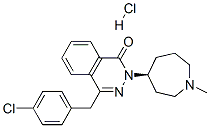
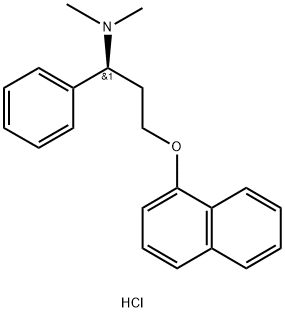
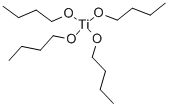

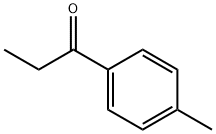

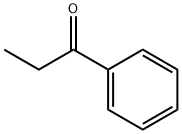
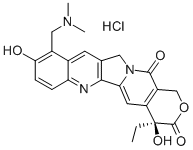
You may like
-
 Dyclonine HCl 98% (HPLC) CAS 536-43-6View Details
Dyclonine HCl 98% (HPLC) CAS 536-43-6View Details
536-43-6 -
 Dyclonine Hydrochloride CAS 536-43-6View Details
Dyclonine Hydrochloride CAS 536-43-6View Details
536-43-6 -
 Dyclonine hydrochloride CAS 536-43-6View Details
Dyclonine hydrochloride CAS 536-43-6View Details
536-43-6 -
 3-(4-amino-1-oxoisoindolin-2-yl)-1-methylpiperidine-2,6-dione 98%View Details
3-(4-amino-1-oxoisoindolin-2-yl)-1-methylpiperidine-2,6-dione 98%View Details -
 20677-73-0 (2,2-diethoxyethyl)methylamine 98%View Details
20677-73-0 (2,2-diethoxyethyl)methylamine 98%View Details
20677-73-0 -
 3-(4-(hydroxyamino)-1-oxoisoindolin-2-yl)piperidine-2,6-dione 98%View Details
3-(4-(hydroxyamino)-1-oxoisoindolin-2-yl)piperidine-2,6-dione 98%View Details -
 57381-49-4 2-bromo-4-chlorobenzonitrile 98%View Details
57381-49-4 2-bromo-4-chlorobenzonitrile 98%View Details
57381-49-4 -
 4,6-dichloropyrimidine-5-carbaldehyde 98%View Details
4,6-dichloropyrimidine-5-carbaldehyde 98%View Details
5305-40-8
